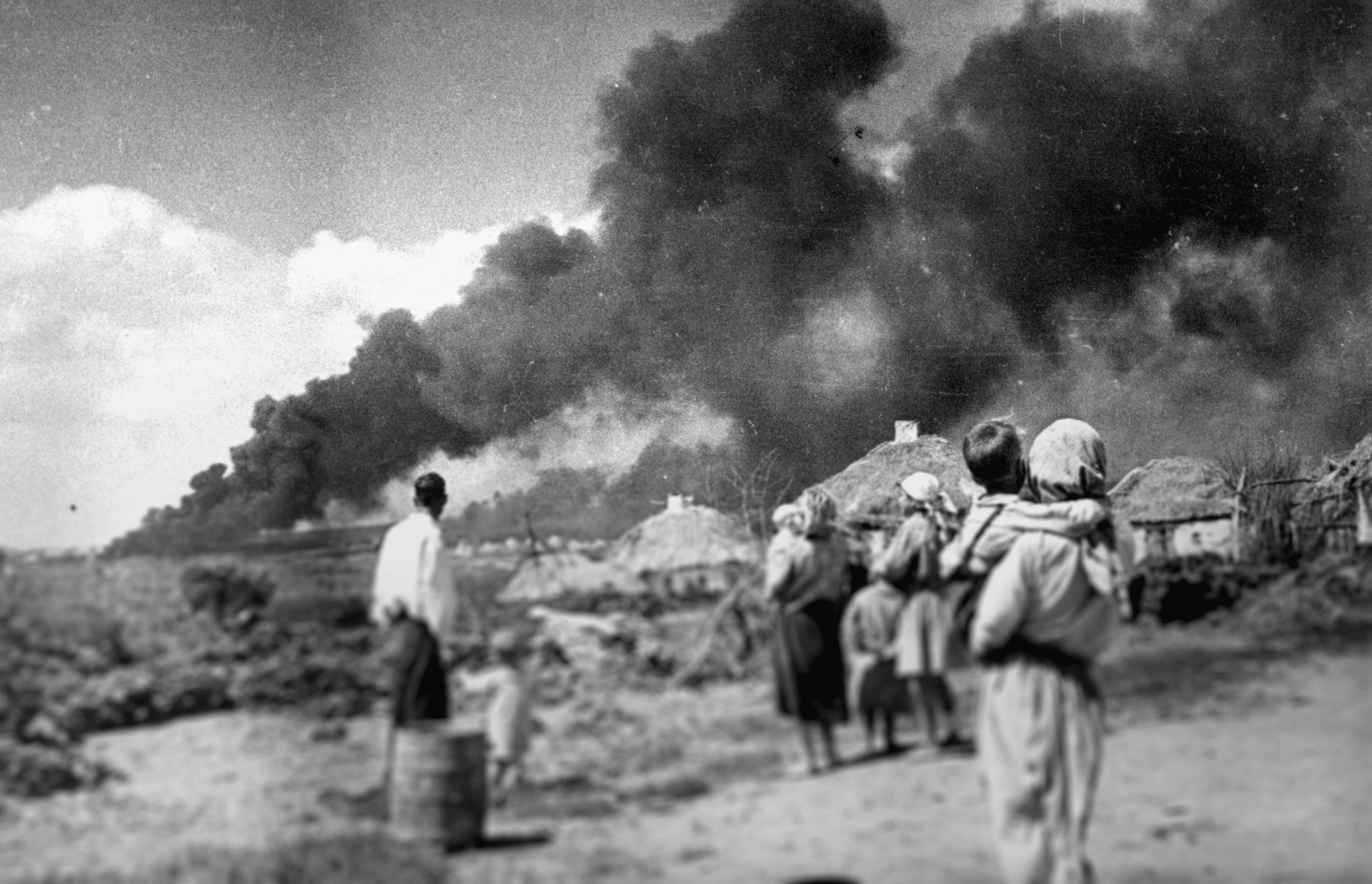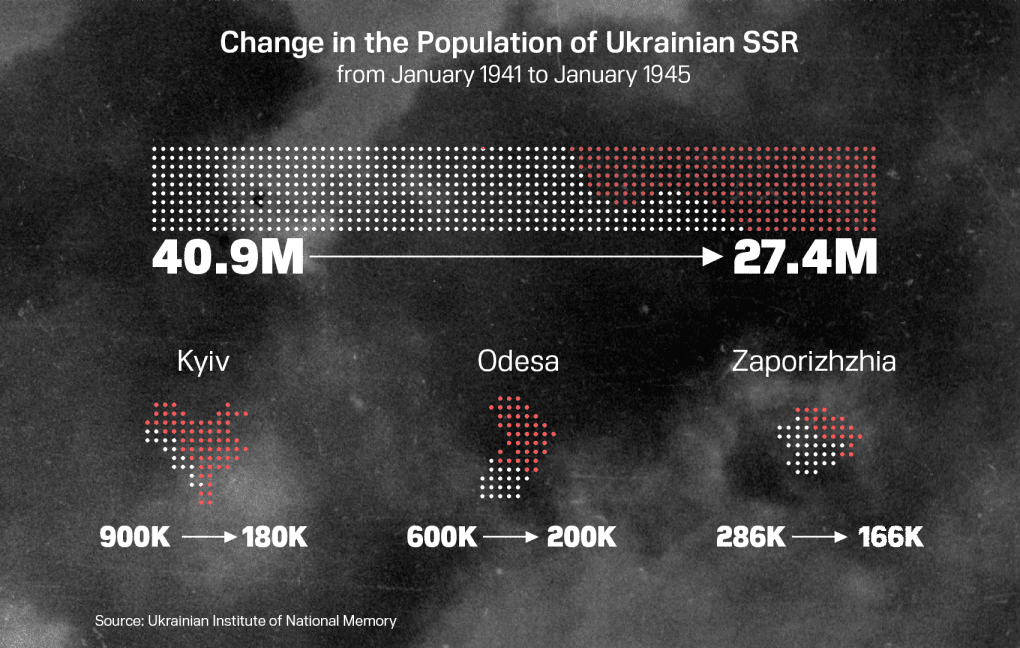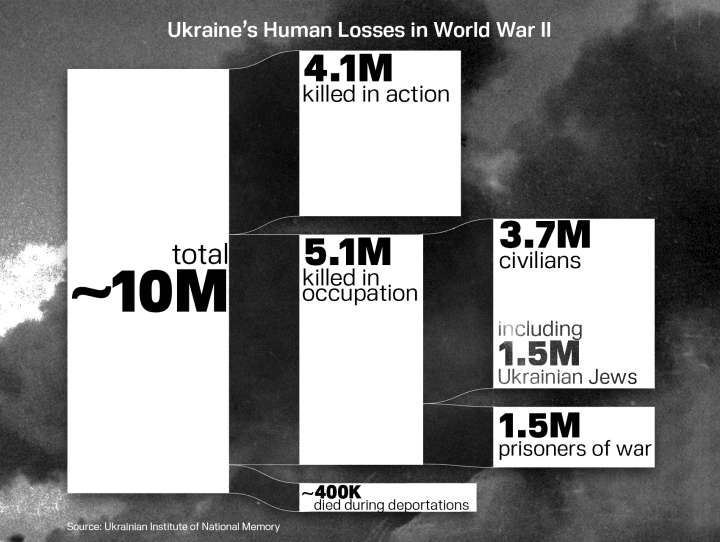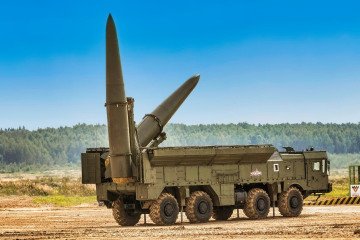- Category
- War in Ukraine
What Was Ukraine’s True Human Cost in World War II? The Numbers Behind the Tragedy

Ukraine was among the first to face Nazi Germany’s invasion of the Soviet Union. The war claimed 20% of its population and devastated its infrastructure and industry. Both the German occupation and Moscow bled the country dry.
Ukraine suffered the consequences of World War II three times.
First, in 1939, when the Red Army invaded Poland, launching the partition of Europe following the signing of the secret Molotov-Ribbentrop Pact. The territories that make up today’s western Ukraine were subjected to brutal repression, executions, and torture. Those with pro-Ukrainian views were deported, replaced by members of the Moscow elite.
Second, in 1941, when Nazi Germany launched its invasion. The Nazi offensive was a disaster for the Red Army. The Third Reich advanced at a staggering pace, and by the summer of 1942, all of Ukraine was under occupation. Hitler aimed to turn the region into a raw material appendage and its people into labor to fuel Germany’s economy. This, in turn, became Stalin’s reason for revenge.
Third, when the Red Army began its counteroffensive in 1943. Stalin ordered his generals to show no mercy to Ukrainians, whom he regarded as collaborators. In the Battle for Kyiv, people were sent to their deaths en masse, with little regard for survival. A similar fate awaited the Crimean Tatars. During World War II, they were subjected to mass deportation from the Crimean Peninsula, land they had inhabited for centuries.
Ukraine paid an enormous price for the war. Both totalitarian regimes—Stalin’s in 1941 and the Nazis in 1943–1944—used scorched-earth tactics as they retreated, destroying everything in their path. Throughout the fighting, both forces launched indiscriminate attacks on civilians, wiping entire cities off the map.
The total death toll across the Soviet Union reached 27 million—a staggering number. Germany, the aggressor, lost 6.5 million.

As for Ukraine, it is known that more than 4 million soldiers from Ukraine died on the battlefield. Under Nazi occupation, over 5.1 million civilians were killed—including 1.5 million prisoners of war, many of whom perished due to the negligence of Soviet military leadership. That number also includes 1.5 million Jews from Ukrainian territories who were murdered by the Nazis.
A total of 2.5 million Ukrainians were forced into labor as so-called Ostarbeiters, according to various sources, with over 400,000 of them dying.
In total, irrecoverable human losses suffered by Ukraine in World War II, unleashed with Stalin’s complicity, exceed 10.4 million. And this does not even include the Crimean Tatars who died during Stalin’s deportation, the dead from the Soviet-Finnish War, and the Ukrainian Insurgent Army fighters killed in battle.
The scale of Ukraine’s demographic catastrophe is reflected in the population statistics of the Ukrainian SSR: in January 1941, the population was 40.9 million; by January 1945, it had dropped to 27.4 million. In the early postwar years, Ukrainian cities were unrecognizable: Kyiv shrank from 900,000 to 180,000 residents, Odesa lost two-thirds of its population, and Zaporizhzhia half.
People were the greatest loss, but Ukraine also suffered the largest proportional material destruction of any Soviet republic—about 40% of total losses—equivalent to roughly $100 billion at the time (about $1.4 trillion in 2023 dollars). Half the country’s housing stock was destroyed, and the most valuable industrial assets were evacuated to Russia, never to be returned.
Ukrainians endured the harshness of Nazi rule. While Slavs were not targeted as aggressively as Jews, Hitler never intended to treat them as a people with rights or freedoms. He saw no need to foster education or culture in Ukraine—better to keep the population uneducated and subservient.
Nazi “Eastern policy” cast Ukraine as a colony, stripped for food, raw materials, and forced labor to fuel the German war machine. Ukrainians were expected to work and uphold Ukraine’s role as the Reich’s breadbasket. Ukrainians were to work and supply food, with no role beyond that. Hitler harbored deep hatred for residents of Russified cities in eastern and southern Ukraine, seeing them as tainted by Bolshevism. In the early months of the invasion, he spoke openly of plans to level major cities—from Moscow and Leningrad to Odesa and Kharkiv.
Erich Koch, Reich Commissioner for Ukraine from 1942 to 1944, openly declared Ukrainians “inferior in every way.”
The Nazis tightly controlled village life. To leave a village, one needed a permit from the local elder or a German official. Harboring strangers was forbidden. A curfew was imposed. Fuel was scarce, agricultural machinery was unavailable, horses were requisitioned for the front, and cows were spared, so most fieldwork had to be done by hand. In addition to food confiscations, peasants were burdened with taxes on villages, homes, cows, horses, and even dogs. Absences and tardiness were harshly punished. Germans could impose penalties for almost anything, from an improper greeting to walking with hands in one’s pockets.
One rarely discussed topic today is the fate of prisoners of war, though their suffering was no less severe. In 1941, hundreds of thousands of Soviet soldiers fell into German hands: 100,000 near Uman, 665,000 near Kyiv, 100,000 near Melitopol and Berdyansk, and another 100,000 near Kerch.

Prisoners were moved between camps in so-called “death marches,” during which many died. Locals were forbidden from helping them—guards shot both those who gave and those who received aid. Nearly half a million POWs were held in camps within the Reichskommissariat Ukraine. Precise death tolls are hard to determine, but one official claimed 2,500 POWs died daily from starvation alone. The death rate reached 50%.
Meanwhile, as the Soviet Union mounted its counteroffensive, Ukrainian men were also drafted into the army, often used as cannon fodder and sent into battle first. Conscription was forced, and many were thrown into combat not only ahead of others, but without any training and even without uniforms, fighting in civilian clothes. In total, Ukraine sent millions to the front; around 2.8 million perished in uniform.
A telling detail: in 2025, Russia launched a website commemorating the 80th anniversary of the victory over Nazi Germany. One section was devoted to the contributions of all Soviet republics to that victory. Strangely, the creators omitted Lithuania, Latvia, Estonia, and Ukraine, mentioning only ten other republics. This, despite the fact that Ukraine was under occupation for years, lost more than 10 million people, and suffered devastating losses. Only after public outrage was the omission corrected. The incident underscores how Moscow continues to use propaganda to rewrite history.
-29a1a43aba23f9bb779a1ac8b98d2121.jpeg)
-6359eca46c72bde40a90abaaadd6eaa8.png)


-206008aed5f329e86c52788e3e423f23.jpg)
